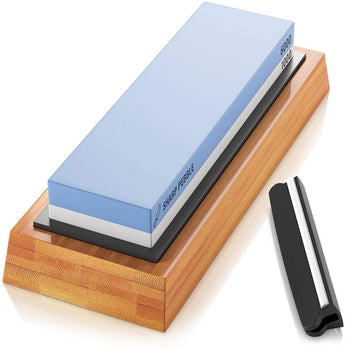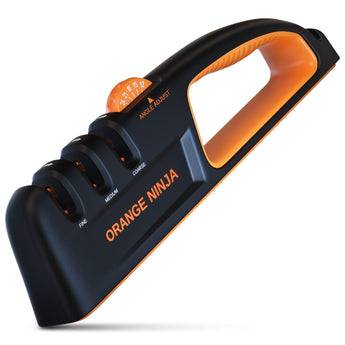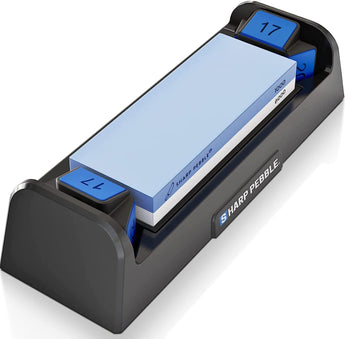
When it comes to maintaining the edge on hardened steel blades, a common question arises: Can you sharpen them effectively using an ordinary sharpening stone? This question is particularly relevant for anyone who owns high-carbon steel knives, specialized tools, or blades that have undergone specific hardening processes. Let's delve into the intricacies of this task and explore whether an ordinary sharpening stone can handle the job.
Understanding Hardened Steel
Hardened steel is known for its durability and strength, attributes achieved through heat treatment processes such as quenching and tempering. This makes hardened steel blades excellent for tasks requiring a sharp, long-lasting edge, from culinary applications to heavy-duty industrial uses. However, the same properties that make these blades superior can also pose challenges when it comes to sharpening.
The Role of a Sharpening Stone
Sharpening stones, also known as whetstones, come in various materials and grit levels, each designed to handle different sharpening needs. Ordinary sharpening stones are typically made from materials like silicon carbide or aluminum oxide, which work well for softer steel but may not be adequate for harder materials. The key factors in determining the suitability of a sharpening stone for hardened steel blades are its hardness and grit.
Hardness of the Sharpening Stone
For a sharpening stone to be effective on hardened steel, it must be harder than the steel itself. This is where ordinary stones might fall short. Hardened steel can have a Rockwell hardness rating (HRC) upwards of 60, which is quite high. Ordinary sharpening stones often do not match this level of hardness and can wear down quickly or fail to effectively sharpen the blade.
Grit Level
Grit refers to the coarseness of the sharpening stone. Lower grit stones (around 200-400 grit) are used for repairing chips and setting the initial edge, while higher grit stones (1000 and above) are used for fine sharpening and polishing. For hardened steel blades, starting with a lower grit to re-profile the edge followed by progressively higher grits to refine the sharpness is essential. However, the stone must be able to withstand the hardness of the blade throughout this process.
Alternatives to Ordinary Sharpening Stones
Given the limitations of ordinary sharpening stones, what alternatives are available for effectively sharpening hardened steel blades?
Diamond Stones
Diamond sharpening stones are an excellent alternative. Composed of micron-sized diamonds bonded to a metal or resin base, these stones are incredibly hard and can cut through hardened steel efficiently. They are available in various grit levels and are known for their durability and speed in sharpening even the toughest blades.
Ceramic Stones
Ceramic sharpening stones are another viable option. Made from highly durable ceramic materials, these stones are harder than most ordinary stones and can effectively sharpen hardened steel blades. They provide a good balance between cutting speed and finishing, making them suitable for a range of sharpening tasks.
Professional Sharpening Services
For those who prefer not to invest in specialized stones or who require a professional touch, using a professional sharpening service can be an excellent choice. These services often use industrial-grade sharpening equipment and techniques that can restore the sharpness of hardened steel blades to factory conditions.
Techniques for Sharpening Hardened Steel
If you decide to sharpen hardened steel blades yourself, here are some key techniques to ensure success:
Consistent Angle
Maintaining a consistent sharpening angle is crucial. Using angle guides can help achieve the proper bevel and ensure even sharpening along the entire edge.
Lubrication
Always use water or honing oil with your sharpening stone. This reduces friction, prevents overheating, and helps remove metal filings from the stone's surface.
Gradual Progression
Start with a lower grit to shape the edge, then move to higher grits for refining and polishing. This gradual progression ensures a sharp, smooth edge.
Regular Maintenance
Regularly flattening your sharpening stone is essential to prevent uneven wear and maintain its effectiveness. Flattening stones or lapping plates can be used for this purpose.
Conclusion
While ordinary sharpening stones may not be the best choice for hardened steel blades, there are effective alternatives available. Diamond and ceramic stones, along with professional sharpening services, offer superior results and can maintain the performance of your high-quality blades. By understanding the limitations and capabilities of your sharpening tools, you can ensure that your hardened steel blades remain sharp and ready for any task.



